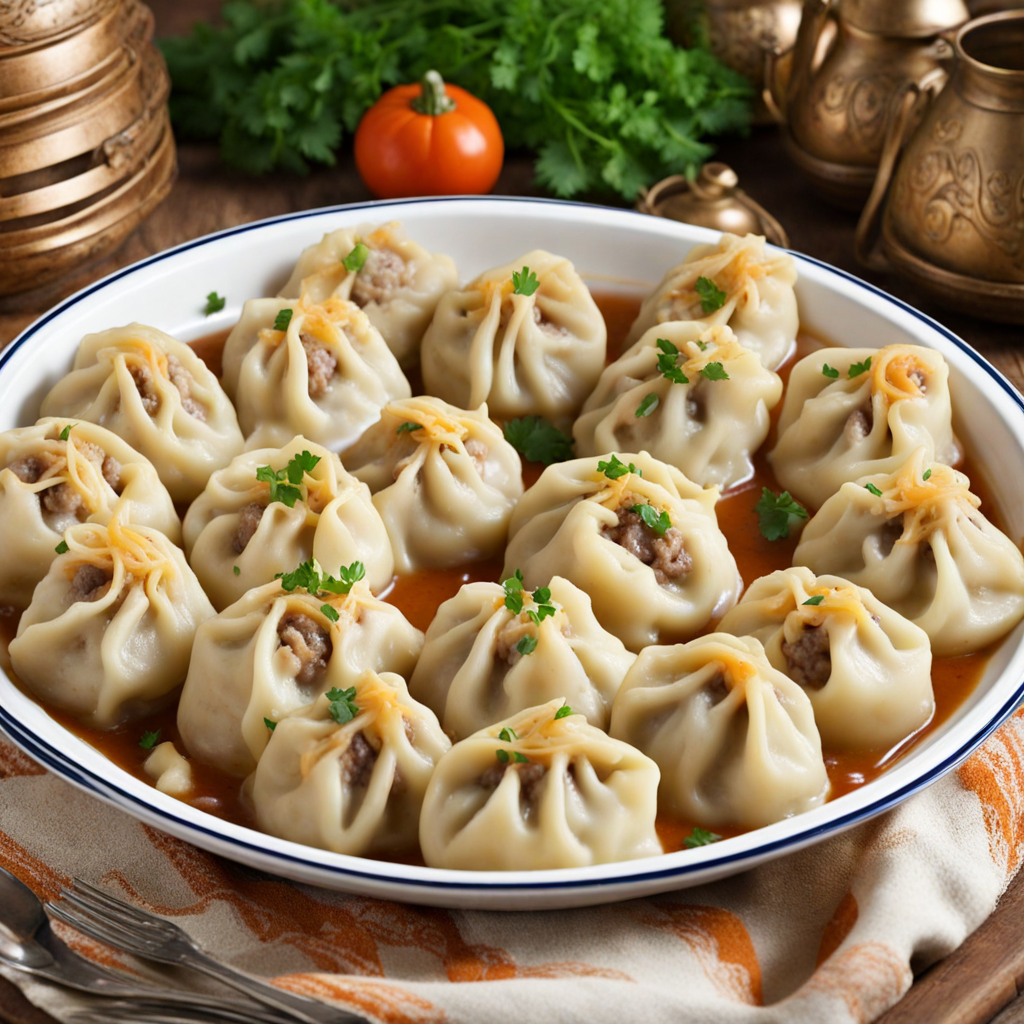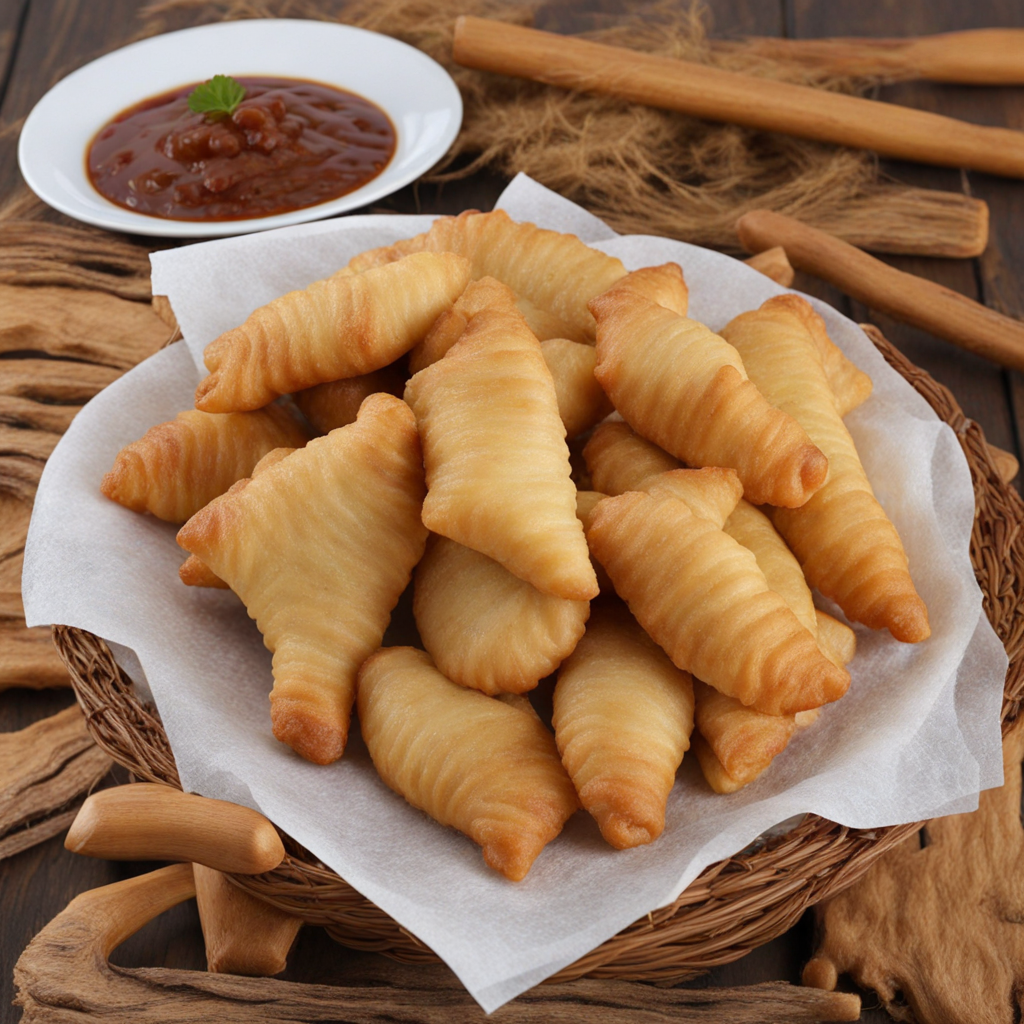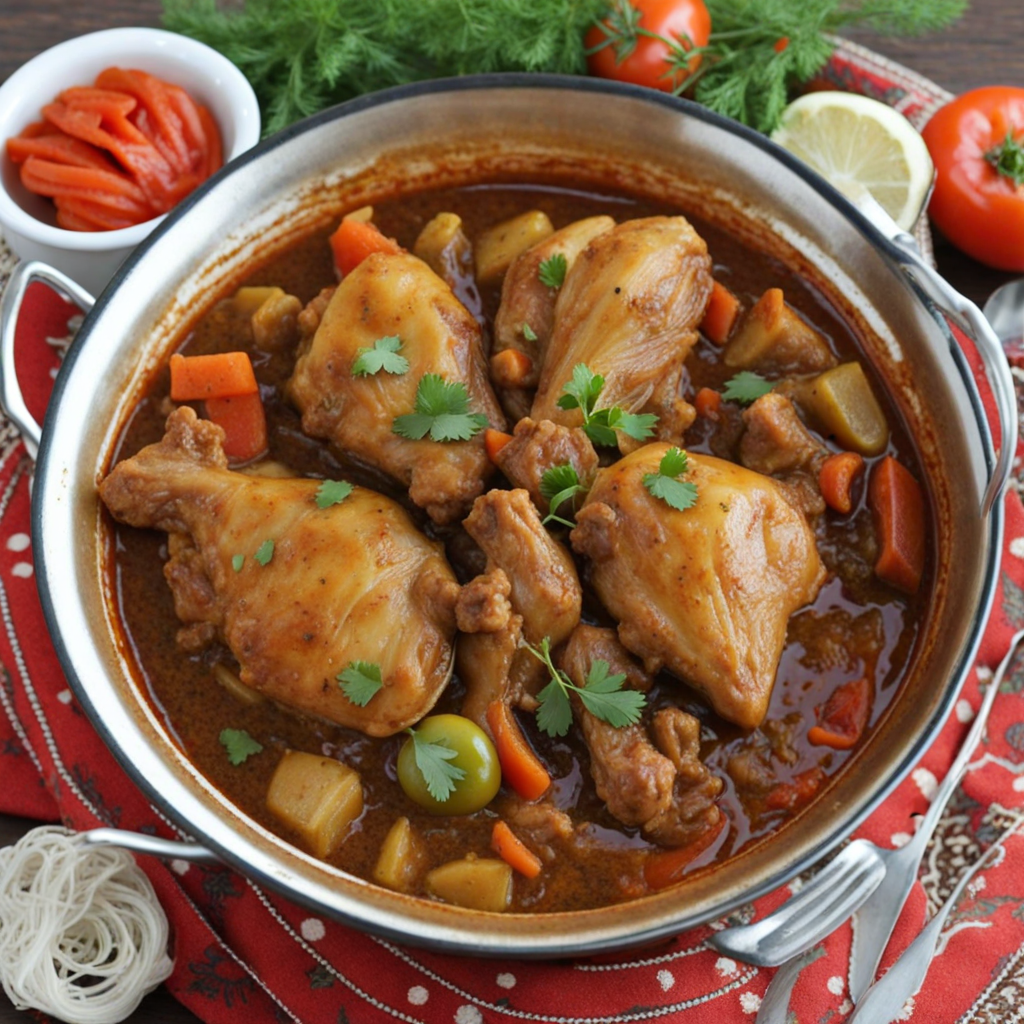Manti
Manti is a delightful dish originating from Turkmenistan, characterized by its unique blend of flavors and textures. These savory dumplings are typically filled with a mixture of ground meat, often lamb or beef, combined with onions and a subtle array of spices. The dough, made from simple flour and water, is rolled out thinly and expertly wrapped around the filling, creating a small pocket that holds the savory goodness inside. This traditional preparation is not only a testament to the culinary skills of Turkmen chefs but also a reflection of the country's rich cultural heritage. The cooking method of manti adds another layer of complexity to this dish. They are traditionally steamed in a special pot called a ‘mantyshnitsa,’ which allows the dumplings to cook evenly while absorbing the flavors from the steam. The result is a tender, juicy filling encased in a soft, slightly chewy dough that is both satisfying and comforting. When served, manti is often accompanied by a drizzle of tangy yogurt or a sprinkle of fresh herbs, enhancing the overall taste experience and offering a refreshing contrast to the rich meat filling. Each bite of manti transports you to the bustling markets and family gatherings of Turkmenistan, where this dish is a staple at celebrations and communal meals. The combination of warm spices, tender meat, and the satisfying texture of the dough makes manti a dish worth savoring. Whether enjoyed as a main course or as part of a larger spread, manti is sure to captivate your palate and invite you to explore the vibrant flavors of Turkmen cuisine.
How It Became This Dish
The History of Манты: A Culinary Treasure of Turkmenistan Origins and Early History The history of Манты (manti) is as rich and layered as the dish itself, which has become synonymous with the culinary identity of Turkmenistan and its neighboring Central Asian countries. The precise origins of мантy are difficult to pinpoint, as they have evolved over centuries and were influenced by the diverse cultures of the region. However, it is widely accepted that мантy have their roots in the nomadic traditions of the Turkic peoples, who were known for their mobility and reliance on hearty, portable meals. The earliest references to dishes resembling мантy can be traced back to the Mongolian Empire in the 13th century, where the concept of steaming dumplings was likely developed. As the Mongolian hordes moved westward, they brought their culinary practices with them, influencing the peoples they encountered. This exchange of food practices led to the adaptation of meat-filled dumplings across Central Asia, including Turkmenistan, where they became a staple in the local diet. Cultural Significance In Turkmen culture, мантy are more than just a meal; they are a symbol of hospitality, family, and tradition. The preparation and consumption of мантy often serve as a focal point for social gatherings, celebrations, and significant events. In Turkmen households, the making of мантy is a communal activity, often involving several family members who come together to knead the dough, prepare the filling, and shape the dumplings. This collaborative process reinforces family bonds and encourages the transmission of culinary knowledge from one generation to the next. During weddings, holidays, and other festive occasions, мантy take center stage. They are typically served alongside a variety of accompaniments, including yogurt, hot sauces, and pickled vegetables. The act of sharing a plate of мантy is a gesture of friendship and goodwill, illustrating the deep-rooted values of hospitality in Turkmen society. Moreover, the dish is often featured in stories and folklore, symbolizing prosperity and abundance. Ingredients and Preparation The traditional мантy are made from a simple yet versatile dough, typically composed of flour, water, and salt. The filling, however, is where creativity and regional variations come into play. While the classic filling consists of minced lamb or beef mixed with onions and spices, modern variations may include chicken, pumpkin, and even vegetarian options, reflecting the evolving tastes of contemporary Turkmen society. The preparation of мантy is an art form in itself. After kneading the dough until it reaches the right texture, it is rolled out and cut into squares or circles. The filling is placed in the center, and the edges are carefully sealed to create a dumpling. The мантy are then traditionally cooked in a steamer, which gives them their characteristic soft and chewy texture. The steaming process also retains the moisture of the filling, allowing the flavors to meld beautifully. Historical Development and Regional Variations As the centuries progressed, the preparation and presentation of мантy continued to evolve. The dish became a canvas for cultural exchange, as trade routes like the Silk Road facilitated the movement of ingredients and culinary techniques across borders. Each region added its unique touch to the dish, creating a tapestry of flavors and styles. In Turkmenistan, мантy have become a staple of everyday cuisine, while also holding a place of honor in festive meals. They are often larger than the variations found in neighboring countries such as Uzbekistan or Kazakhstan, where мантy may be smaller and filled with different ingredients. The Turkmen version, known for its generous filling, reflects the abundance of the land and the importance of sharing in their culture. In the Soviet era, the popularity of мантy spread beyond Turkmenistan, as the dish was embraced by various ethnic groups within the Soviet Union. This cross-cultural appeal led to further experimentation with fillings and cooking methods, including frying and baking, which are less common in traditional Turkmen practices. Modern Day Relevance Today, мантy remain an integral part of Turkmen culinary heritage, celebrated for their flavor and cultural significance. In urban areas, you can find мантy served in restaurants, while rural communities continue to prepare them according to traditional methods. The dish has also gained international recognition, with Turkmen restaurants around the world introducing мантy to new audiences. With globalization and the rise of food tourism, мантy have become a symbol of Turkmen identity, drawing interest from culinary enthusiasts eager to explore the flavors of Central Asia. Food festivals, cooking classes, and cultural events often feature мантy as a highlight, showcasing not just the dish itself but also the stories and traditions that surround it. Conclusion The journey of мантy from their ancient origins to their modern-day significance is a testament to the enduring power of food as a cultural connector. In Turkmenistan, мантy are more than just a beloved dish; they embody the spirit of community, hospitality, and tradition. As they continue to evolve, мантy serve as a delicious reminder of the rich tapestry of history and culture that defines Turkmenistan and its people. Whether enjoyed at a family gathering or a celebratory feast, мантy remain a cherished culinary treasure, inviting all who partake to experience a taste of Turkmen heritage.
You may like
Discover local flavors from Turkmenistan







